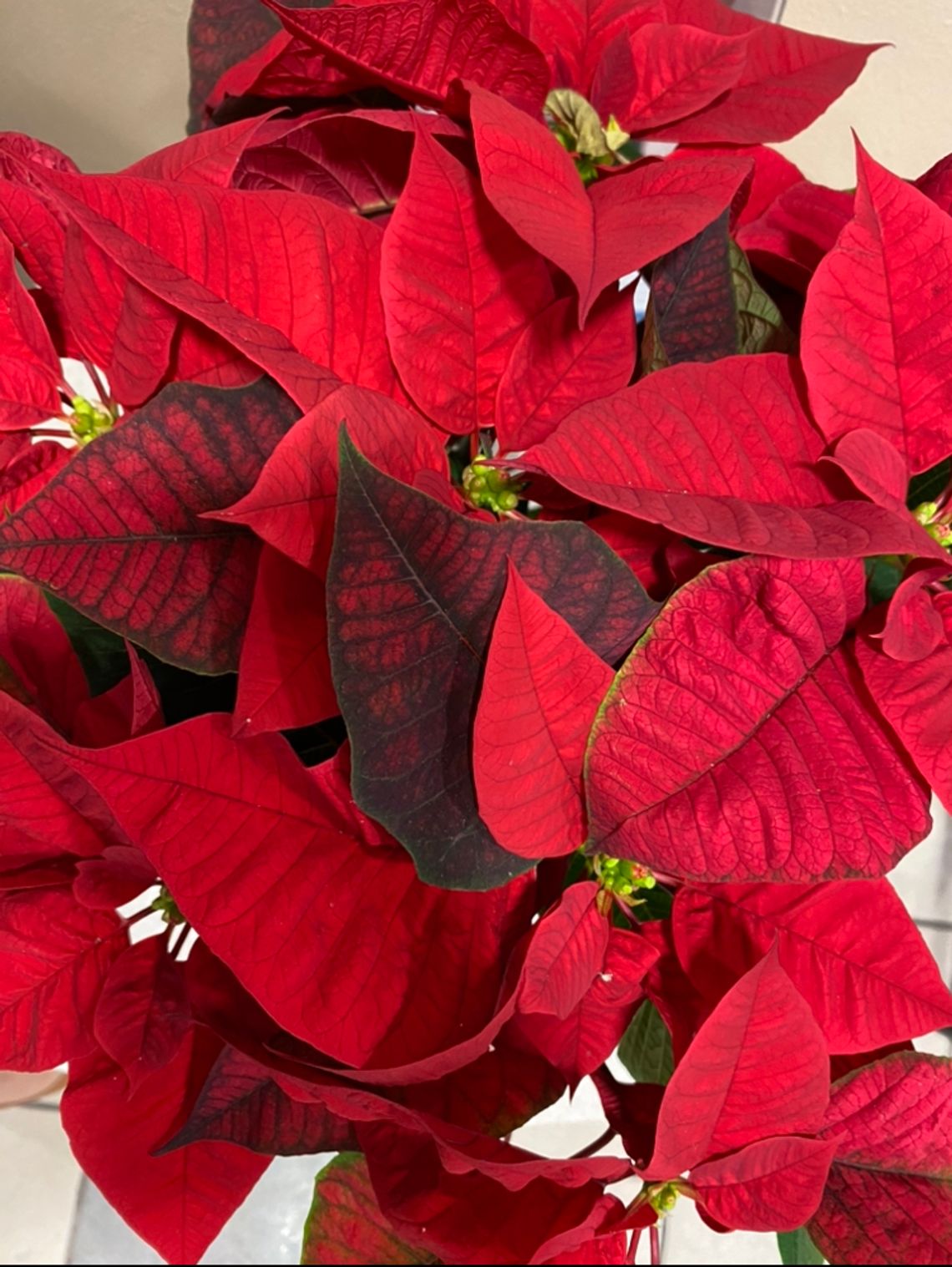After the Christmas tree, poinsettias are the quintessential holiday plant.
Bright and festive with their cherry red leaves that form star-shaped clusters, poinsettias bring color and beauty to a home during the long, dark days of winter.
Poinsettias are indigenous to Central America and they grow wild in Southern Mexico. According to Mexican folklore, a young child wanted to bring a gift to honor baby Jesus on Christmas Eve. Being a peasant, the child had no money to buy a gift so instead picked a bouquet of weeds for the Christ child. Touched by this gift, the angel blessed the weeds and transformed them into beautiful, bright red flowers.
The green and red Flor de la Nocha Buena (Flower of the Holy Night) was brought to the United States in 1836 by Joel Roberts Poinsett, the first U.S. ambassador to Mexico and amateur botanist. Since then, poinsettias have become the best-selling potted plant in the United States and Canada. Poinsettia contribute more than $250 million to the economy every year--and they are by far the most popular Christmas plant.
Poinsettias come in a few different colors, most popular colors are red, white and pink. They also come in yellow, peach, marbled and speckled varieties. Commercial growers only focus on a handful of varieties, but there are more than 100 types.
The Aztecs called this plant Cuetlaxochitl and cultivated it long before European settlers arrived. They used Cuetlaxochitl for red and purple dyes and used the sap medicinally.
Poinsettias are euphorbias and belong to the spurge family, a very large plant family with thousands varieties found throughout the world. Some spurge plants resemble cacti or succulents, while others are more tropical and leafy in appearance. Despite the differences in appearance, all spurges have a poisonous milky white sap in the stems and they have really unusual and unique floral structures.
You might have heard poinsettias are poisonous, but they are not to humans. According to the National Poison Control Center, if consumed, poinsettias can irritate your stomach but the compounds in poinsettias are not fatal to humans. The sap can be irritating to your skin and so wash your hands if you get any on them. They are mildly toxic to pets so keep them away from your animals.
Poinsettias grow as small trees in tropical climates but are also treated like landscaping shrubs where they can grow up to 10 feet tall. Unfortunately, when planted in our part of the world, they don’t tolerate temperatures below 50 degrees. Poinsettias thrive indoors between 65-70 degrees.
To keep your poinsettias in good shape through the holidays, put them near a sunny window and water them whenever the surface feels dry to the touch. They are sensitive to soil moisture more so than other houseplants, so check them often. Don’t over water them or allow them to sit in excess water. Remove the pretty plastic wrapping off them before you water them and set them in the sink to drain before replacing the wrapper.
The parts that turn red are actually leaves called bracts, and the flowers are the little golden buds in the center.
To get that nice, showy color, poinsettias have to be light manipulated in order to get their flowers to set buds. They are short-day plants and require 15 hours of complete darkness daily. Like other plants, they need some light and poinsettias need eight hours to stimulate the color change in the bracts.
Most people treat poinsettias as annual houseplants and get new ones every year, but it is possible to keep them alive and change colors every winter. If you are up for the challenge, you will need to replicate a short-day growing schedule 10 weeks before your desired “bloom” time. This means placing them in a sunny spot for eight hours, then moving them to a location that is very dark.
It will be a commitment to creating the conditions that stimulate color change for that amount of time. Many people just prefer to let the greenhouses do all the hard work. Treat yourself to some lovely new ones and think of it like buying a flower bouquet.
With 25 years of backyard gardening experience, Julie is a plant and nature enthusiast. She lives in Taylor and hosts the “Plow & Hose Organic Gardening in Central Texas” podcast and radio show that airs on KBSR, Black Sparrow Radio every Saturday and Sunday at 9 a.m.
.png)






